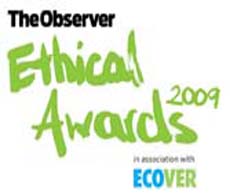She asked and I said yes.
:}
Top Solar Fountains for 2011
Everybody’s trying to go green these days – we’re cutting back on driving, using energy efficient light bulbs, buying Energy Star appliances, and buying products that are made using only environmentally friendly practices. One area people don’t usually think of when going green is their outdoor accessories. Yes, solar powered items around for some time, but their popularity has really taken off in recent years with all the great products coming out. One of those products is the solar fountain. Today, we’re going to look at a few of the top solar fountains for 2011.
First is the Alpine 2 Tier Water Fountain: Solar Panel Powered. When you first look at this, you’d swear it was carved out of a tree. But it’s actually made of fiberglass, so it’s pretty light and very durable. This model features a solar panel outside of the unit, attached by an 8 foot cord. This gives you more versatility in where you want to place it. For example, you could have your fountain sitting in the shade up on the patio but keep the panel out in the yard where it gets plenty of sun, so you can enjoy your fountain in cool comfort. Its unique look has made it a top seller this year and it’s sure to remain that way.
Next is the Smart Solar Portsmouth Solar Birdbath. This fountain offers a modern take on the classic stone birdbath. It features Smart Solar’s patented solar panel design, with the panel sitting in the middle of the basin so it’s perfectly positioned to get all the sunlight it can. Even when it’s not running, it still makes a great decorative accent thanks to the designs around the bowl, column, and base. And with its resin construction, it can hold up outside almost all year without showing any wear. At its value price, this fountain really can’t be beat for anywhere around the home, from a spot on the patio to a flower bed in the front yard.
Finally, we have another Smart Solar product, the Blenheim Two-Tier Solar-on-Demand Fountain. This model offers a little something extra, with a two tier design that gives you the beautiful sound of running water flowing from the top bowl to the bottom. Made of resin, it features a black iron finish, which is something you don’t find in a lot of fountains and looks great in a modern outdoor space. But what really separates it is the Solar-on-Demand technology. It has a backup battery that stores the sun’s energy so it can run for up to 6 hours in the evening or when the sun’s not out. This feature has made it one of the most popular solar fountains on the market today.
:}
If you’re thinking of more ways to do your part to be green while beautifying your home, try a solar fountain. No wires and no electricity costs – just a fun way to enhance your home and help the environment!
About The Author – Melissa Anne is a writer with OutdoorLiving.com/learning-center/ and a lifelong outdoor living enthusiast. For more on solar fountains, visit OutdoorFountains.com, where you can find everything from a solar pump to a solar bird bath.
:}
More tomorrow.
:}
 For more about this website and what is all about take a look at the page Why Transition Culture?. This section is to tell you about myself. It is written in the third person not due to delusions of grandeur, but so that people who need biog pieces can cut and paste it from here.
For more about this website and what is all about take a look at the page Why Transition Culture?. This section is to tell you about myself. It is written in the third person not due to delusions of grandeur, but so that people who need biog pieces can cut and paste it from here. He is author of ‘Woodlands for West Cork!’, ‘Energy Descent Pathways’ and most recently ‘The Transition Handbook: from oil dependence to local resilience’, which has been published in a number of other languages, and which was voted the 5th most popular book taken on holiday by MPs during the summer of 2008. He publishes www.transitionculture.org, recently voted ‘the 4th best green blog in the UK’(!).
He is author of ‘Woodlands for West Cork!’, ‘Energy Descent Pathways’ and most recently ‘The Transition Handbook: from oil dependence to local resilience’, which has been published in a number of other languages, and which was voted the 5th most popular book taken on holiday by MPs during the summer of 2008. He publishes www.transitionculture.org, recently voted ‘the 4th best green blog in the UK’(!).











